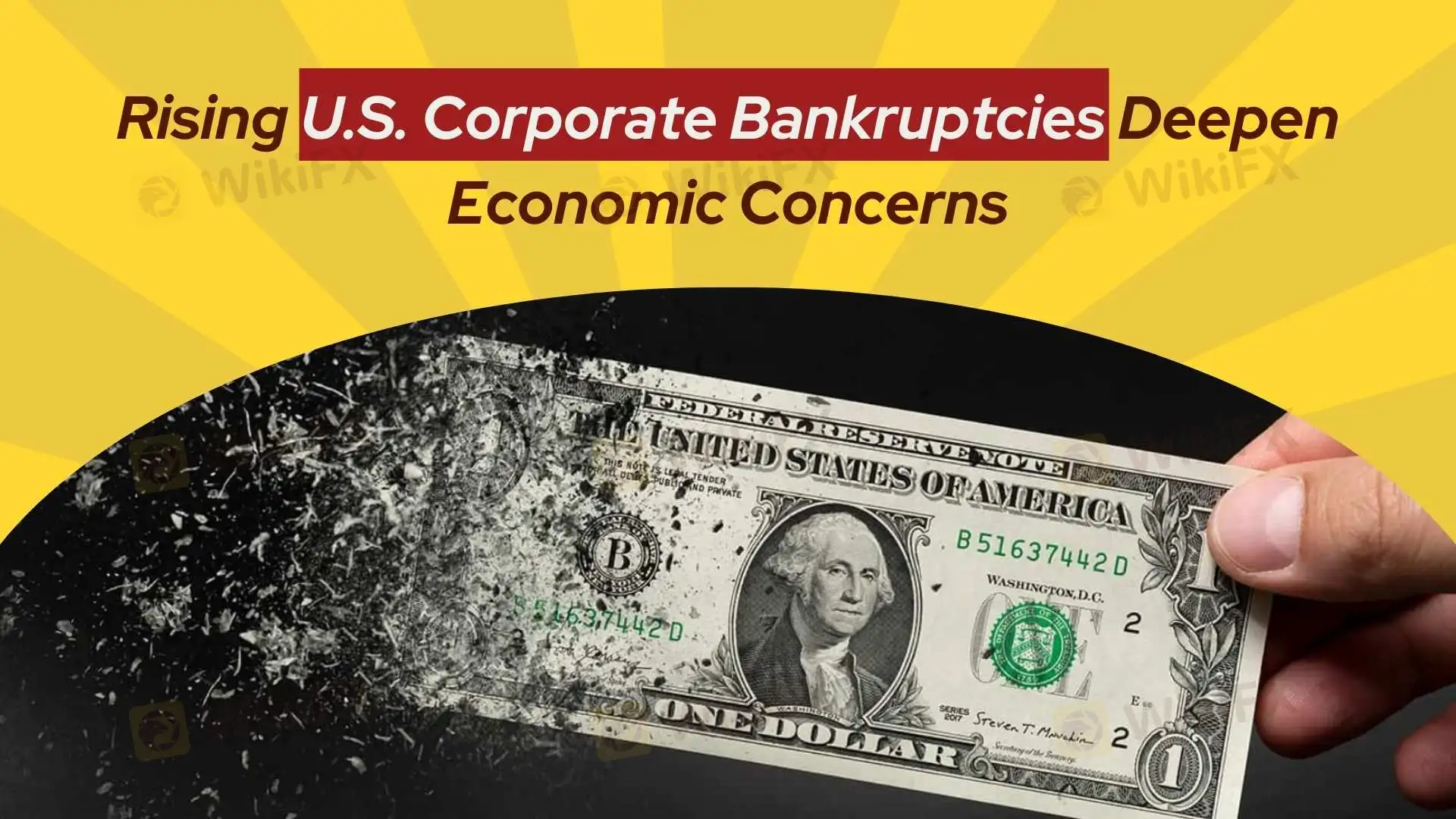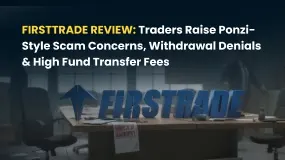简体中文
繁體中文
English
Pусский
日本語
ภาษาไทย
Tiếng Việt
Bahasa Indonesia
Español
हिन्दी
Filippiiniläinen
Français
Deutsch
Português
Türkçe
한국어
العربية
Rising U.S. Corporate Bankruptcies Deepen Economic Concerns
Abstract:In 2024, 686 U.S. companies filed for bankruptcy, marking the highest number since 2010.

Record-High Bankruptcies Since 2010
In 2024, a total of 686 U.S. companies filed for bankruptcy, marking an 8% year-on-year increase and reaching the highest number since 2010, when 828 companies filed. According to data from S&P Global Market Intelligence, this surge underscores the compounding effects of economic slowdown and corporate financial struggles, revealing deep challenges to economic recovery.

Among the bankruptcies, at least 30 companies carried debt exceeding $1 billion, spanning multiple industries. Party City‘s bankruptcy highlighted the struggles of the retail sector under weak demand and rising costs, while Tupperware’s crisis symbolized the shrinking household goods market. Red Lobsters insolvency further underscored the profitability challenges in the service sector, particularly in the restaurant industry, amid inflationary pressures.
Accelerating Bankruptcy Trends
A review of recent corporate bankruptcy filings reveals a clear acceleration in the trend. From 2021 to 2022, U.S. corporate bankruptcies totaled 777. This number jumped to 636 in 2023 and has already reached 686 in 2024, reflecting a rapid year-over-year increase.

Fitch Ratings also reported that in 2024, out-of-court restructurings outnumbered bankruptcies at a ratio of approximately 2:1. However, recovery rates for first-lien loans issued by companies with over $100 million in debt fell to their lowest levels since 2016, indicating rising risk exposure for creditors and heightened concerns about financial system stability.
Weak Consumer Demand and Debt Pressure
The wave of corporate bankruptcies is largely driven by sluggish consumer demand. EY Chief Economist Gregory Daco noted that rising costs for goods and services are suppressing consumer spending, particularly impacting middle- and low-income households. This trend extends beyond specific industries, affecting retail, services, and manufacturing broadly. Consumers are becoming more cautious, cutting back on non-essential expenses, while businesses face both weak demand and rising supply chain costs.
Meanwhile, the high-interest-rate environment has increased corporate debt burdens, contributing significantly to the bankruptcy surge. Although the Federal Reserve has begun easing rates to relieve financial pressures, its planned 50-basis-point cut in 2025 is unlikely to fully alleviate the financial strain on businesses. Many companies, caught between maturing debt and rising financing costs, are losing the ability to sustain operations.
Multi-Dimensional Impacts of Bankruptcy
Corporate bankruptcies represent more than just individual financial failures—they can trigger ripple effects with broad economic and social consequences. Economically, a wave of bankruptcies weakens market competitiveness and productivity. The insolvency of iconic companies in certain industries can further erode investor confidence and market stability.
Socially, bankruptcies have a significant impact on employment. While overall U.S. Unemployment remains relatively low, localized crises in specific industries and regions may arise from widespread corporate failures. Moreover, declining consumer confidence could further slow economic recovery.
Opportunities and Challenges Behind the Bankruptcy Wave
Despite its apparent risks, the bankruptcy wave could present opportunities for some companies to reset their strategies. Through out-of-court restructurings or bankruptcy protection, businesses may reduce debt burdens and optimize operations, laying a foundation for future recovery. However, for creditors and investors, the uncertainties involved in this process pose significant risks.
Looking ahead, whether the U.S. economy can emerge from the bankruptcy wave amid high interest rates and inflationary pressures will depend on several factors. These include the Federal Reserve‘s ability to balance inflation control with lower funding costs, potential government fiscal policies to support businesses, and the market’s capacity to drive growth through innovation and industrial transformation.
Disclaimer:
The views in this article only represent the author's personal views, and do not constitute investment advice on this platform. This platform does not guarantee the accuracy, completeness and timeliness of the information in the article, and will not be liable for any loss caused by the use of or reliance on the information in the article.
Read more

Firsttrade Review: Traders Raise Ponzi-Style Scam Concerns, Withdrawal Denials & More Issues
Have you lost all your capital while trading via Firsttrade? Does the US-based forex broker disallow you from withdrawing funds? Do you have to pay massive fees when transferring funds? Does your trade get affected because of frequent malfunction in the trading app? These have been haunting many traders at Firsttrade. Consequently, many of them have raised complaints online. In this Firsttrade review, we have shared such complaints. Keep reading to know about them.

Defcofx Review: Spread Manipulation & Poor Customer Support Outrage Traders
Does the poor customer support service leave you stunned when trading via Defcofx? Do you receive blunt, negative responses from the support team on several trading queries? Does the Saint Lucia-based forex broker pile on the losses for you by manipulating forex spread charges? In this Defcofx review, we have shared some complaints made against the broker. This will further answer your question: Is Defcofx real or fake?

Ponzi Scheme Operator Sentenced to 14 Years in Western Australia
Chris Marco, a Ponzi scheme operator, was sentenced to 14 years for a $34 million investment fraud in Western Australia. Read about the case and its impact.

How to Add and Take Out Money from Amillex Broker: A Complete Guide
Good money management is the foundation of successful trading. Learning how to make an Amillex Broker deposit and withdrawal is your first step toward trading with confidence. We know that for any trader, moving money must be safe, fast, and simple. This guide gives you a complete, step-by-step walkthrough for all amillex broker funding activities, so you can manage your account with total clarity. The whole process, from your first deposit to taking out profits, is made to be simple. You start by logging into your secure client area, picking a payment method that works for you, choosing the amount, and confirming the transaction. This guide will cover detailed deposit instructions, a full breakdown of withdrawal steps, a comparison of available payment methods, and a detailed look at the security measures protecting every transaction.
WikiFX Broker
Latest News
Annual Sales Of New Vehicles Expected To Hit Only 15.7 Million Units: Cox
Currency Calculator



